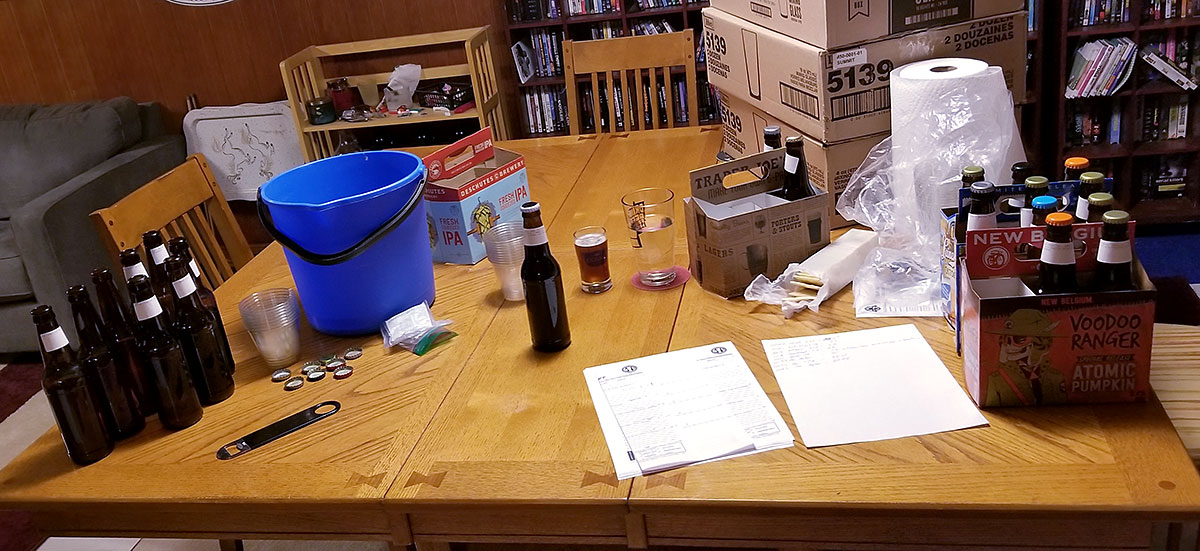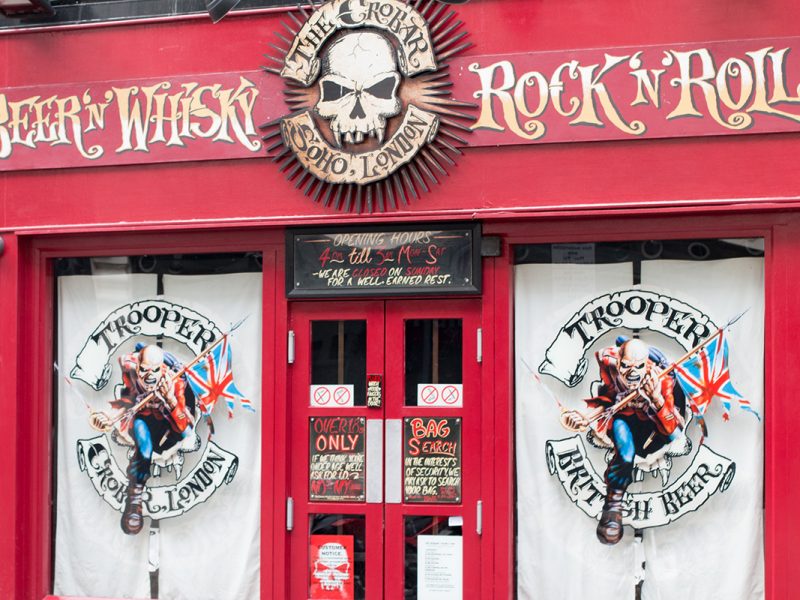TL/DR Version: Helping at competitions will get you free beer to practice your tasting and judging skills.
For those interested in learning more about beer, or becoming a BJCP Beer Judge, one of the best things to do is drink a lot of beer – thoughtfully. Not just what style it may be but looking for flaws or balance issues. “Woah!”, you say. “I can do that – easy!” Which is true, at which point your mitigating factors are time and money. Or is it?
There will be a point where you realize that most commercial beer is pretty well made and lacking in significant flaws. Some exceptions being taprooms that haven’t figured out their systems and the occasional expired or infected batch from a commercial producer. Where do you find beer that most likely has something “wrong” with it? Any and all home-brew competitions.
The Judging Process, or, The Life of an Entry Bottle
For those who may have no knowledge of how competitions work or have yet to judge at one, it’s not that scary, really. Here’s a brief overview.
Entrants are usually instructed to send 2 beers per entry. I’m going to pull a random number to make math easier (math’s are hard). Say you have a competition with 100 entries, a total of 200 beer-filled bottles have been sent in. Each entry will have at least one opened and judged. The other bottle is held back in case the entry is deemed worthy of moving on to the Best of Show round (BOS). This is where the top beers in their categories go up against all the other top beers for Gold, Silver, and Bronze for the entire competition.
I’d say, on average, 10%-15% of those beers will feature at the BOS – that’s where the second bottle comes in. A fresh bottle is used for the BOS round as the originally opened, judged, and now flat beers will very much be lacking in things that made them move on to the next round. So, what happens to those other 85-90 bottles? You should take them home.
Benefits of Helping Competitions.
Here’s where it gets fun. You don’t have to judge to get access to these 85+ beers. For many competitions there are other roles for people to play such as staffing (runners and the like), and stewards, who help the beer get from the staging areas to the judges and help with judging paper work. No judging knowledge or experience necessary. Every comp I’ve ever been to is super friendly and will train noobies in, no problem. They will always be appreciative of your help!
Stewarding is probably the best as you learn how to handle beer in a competition setting and will pick up things about the judging sheets and the judging process as you go. Also, many competitions, and judges who are aware that you might be looking to expand your knowledge, will ask stewards if they want to sample either a really great tasting beer, or one that is on the lower end of the spectrum. Another great way to gain experience and confidence in your skills.
With the competition finished, awards given, and opened bottles emptied, there are 80+ beers left unopened. There are two opportunities here:
- Empty, and 99% cleaned bottles to take home if you’re a homebrewer. Remember, of the 200 bottles received, 115 or so have been opened and emptied. These have to go somewhere. Sometimes it’s the recycling at the location where the comp is held. In reality, they should go home with someone who will use them to put more beer in and send to more competitions. Best way to recycle them in my book.
- Grab a sixer (or twelver) of random beers to take home and practice with. Take them home, go to the BJCP website and download a pdf of the 2015 Guidelines. Each bottle should be labeled with a cryptic number/letter combination that matches one of the categories. This is how you find out what you’ve got in your bottle. Read through the description, pop the top, and taste while you read. Take notes or use the BJCP Scoresheet as a guide. Hint: This is also a way to taste some of the more esoteric beer styles that you would almost never see at a taproom or on a store shelf.
I judge at a number of competitions each year, run a small one every January, and assist at a larger one in March. Every time I come home with free empties for my homebrew and a slew of entries that didn’t make the cut. I will sit down with these beers and judge them as if I were at a competition. This is where it gets interesting as each one didn’t make the cut for one reason or another.
For me it becomes a sleuthing game to see if I can figure out why the judges made the decision they did. To one honest, there have been quite few beers that were really good, which means the competition for those categories were pretty fierce. It also gives me some interesting flaws that I might never come across tasting regular, commercial beer offerings. High oxidation(wet paper/cardboard), weird infections (burnt electric wires or baby vomit anyone?), or water profiles with super high levels of chlorine/chloramine. You’d almost never find these issues in a can on a shelf at your local bottleshop.
The best part is that they are all FREE! FREE, FREE, FREE. Competition organizers love it when people take all these bottles home, full or empty, as it’s less work for them at the end of the day.
So, whether you want to expand your horizons and taste more beer or looking to up your current judging game by having access to more styles and flaws for comparison, find out where your closest homebrew competitions are by checking out the American Homebrewers Association website and volunteer to sling beer for a few competitions. You’ll always meet a great group of people, learn things about beer and competitions, and take home beer and/or bottles that you can use at home to train your palate.
Cheers!
Randy the Beer Man




